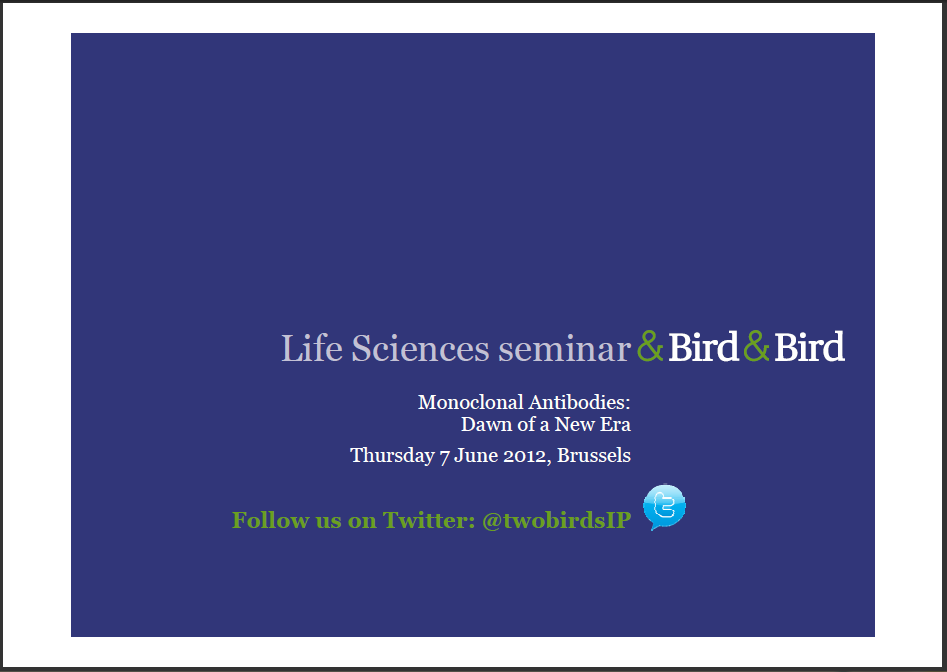Geen nationale wetgeving voor uniforme barcodering
Brief regering Uniforme barcodering voor geneesmiddelen en medische hulpmiddelen, Kamerstukken II 2012/13, 29 477, nr. 247.%20wikimedia.png)
 Mevrouw Dijkstra (D66) heeft tijdens het VAO een motie (29 477, nr. 218) ingediend waarin zij verzoekt om over te gaan tot het invoeren van nationale wetgeving voor uniforme barcodering voor geneesmiddelen en medische hulpmiddelen. Deze motie is aangehouden. In deze brief geef ik mijn reactie op de motie.
Mevrouw Dijkstra (D66) heeft tijdens het VAO een motie (29 477, nr. 218) ingediend waarin zij verzoekt om over te gaan tot het invoeren van nationale wetgeving voor uniforme barcodering voor geneesmiddelen en medische hulpmiddelen. Deze motie is aangehouden. In deze brief geef ik mijn reactie op de motie.
(...) Reactie op de motie:
Productie en handel in medische producten zijn mondiale activiteiten. De wettelijke productvereisten zijn daarbij op Europees niveau gereguleerd.
Het is dan ook juist daarom dat grote inspanningen op internationaal niveau moeten worden geleverd, om te komen tot een wereldwijd geharmoniseerde en doelmatige aanpak van traceerbaarheid en een over de hele wereld aanvaard systeem voor een unieke identificatie. Helaas vergt deze internationale aanpak wel de nodige tijd. Ik begrijp dan ook het aandringen door uw Kamer op nationale spoed.
Gezien de wettelijke beperkingen maar zeker ook vanwege de tijdelijkheid van en de omvangrijke benodigde investeringen voor een nationaal identificatiesysteem, vind ik het in dit stadium niet doelmatig om over te gaan tot een nationaal wettelijke verplichting met betrekking tot uniforme barcodering voor geneesmiddelen en medische hulpmiddelen.
Verder werkt het gebruik van een uniforme barcode alleen als zorgpartijen deze volledig gebruiken en integreren in (logistieke/administratieve) processen, dus vanaf productie tot aan de patiënt. Daarmee heeft het afdwingen van het gebruik van gecodeerde productidentificatie bij leveranciers, zonder dat ziekenhuizen (of zorginstellingen) het gebruik van de uniforme barcodering in hun proces toepassen, beperkte waarde.
Omdat identificatiesystemen omvangrijke investeringen vergen, wil ik ervoor waken dat de zorgaanbieders verschillende standaarden voor productidentificatie5 implementeren waarvan achteraf blijkt dat deze toch anders ingericht zouden moeten gaan worden. Met verschillende betrokken partijen is reeds gesproken (Nefemed, NVZ, NFU, ZN, ZKN en OMS). Ik vind het belangrijk dat partijen vooruitlopend op de Europese regelgeving hier voortvarend maar bovenal gezamenlijk mee aan de slag gaan. Internationaal – Global Harmonization Task Force (GHTF)3 en internationale zorgpartijen – is immers al gekozen voor een standaard voor het vaststellen van de identificatiecode voor medische hulpmiddelen en geneesmiddelen. Ook is regelgeving vanuit Europa onderweg.
Op verzoek van de eerder genoemde organisatie GS1 Nederland hebben ambtenaren van mijn ministerie ook met hen gesproken. In een goed en constructief overleg is afgesproken om, waar mogelijk, gezamenlijk op te trekken bij het stimuleren van partijen om hun zorgprocessen voor te bereiden op de invoering van een uniforme barcodering. Dit onderwerp is door VWS ook ingebracht in het bestuurlijk overleg patiëntveiligheid met betrokken partijen in de ziekenhuiszorg. Gezien het bovenstaande ontraad ik de motie van mevrouw Dijkstra om over te gaan tot de invoering van een nationaal wettelijke verplichting met betrekking tot uniforme barcodering voor geneesmiddelen en medische hulpmiddelen.
Daarnaast vind ik het belangrijk om verantwoord voorbereidend te handelen. Dit zal ik doen door aansluiting te blijven zoeken bij Europese ontwikkelingen, daarbij zal ik onderzoeken in hoeverre coalitievorming met andere lidstaten de Europese voortgang kan stimuleren. Alhoewel er wel tekening begint te komen in de Europese ontwikkelingen (aansluitend bij die in de Verenigde Staten) duurt een en ander langer dan eerder gedacht.
Ik wijs tot besluit nog graag op een gesprek dat ik in februari 2013 had met Eurocommissaris Borg. In dat gesprek heeft de Eurocommissaris aangegeven dat er gezocht wordt naar het opzetten van een «global harmonized system». Volgens hem is er goede hoop dat het internationale werk op dat terrein zich verder ontwikkelt. Hij verwacht dat er na een jaar een werkbaar systeem is.
Vanzelfsprekend zal ik uw Kamer op de hoogte brengen, zodra er nieuwe ontwikkelingen op dit terrein spelen.
De minister van Volksgezondheid, Welzijn en Sport,
E.I. Schippers
.gif)
 2. Is Souvenaid volgens u een geneesmiddel of een dieetdrankje? Kunt u uw antwoord toelichten?
2. Is Souvenaid volgens u een geneesmiddel of een dieetdrankje? Kunt u uw antwoord toelichten? While everybody is running around about
While everybody is running around about  Een bijdrage van Marieke Coumans,
Een bijdrage van Marieke Coumans,  Een samenvatting van de brief met de volgende onderwerpen:
Een samenvatting van de brief met de volgende onderwerpen: Today was a big day with a
Today was a big day with a  With permission, CC-BY-SA
With permission, CC-BY-SA  Commentaar in't kort van Karin Verzijden,
Commentaar in't kort van Karin Verzijden,  Een bijdrage (op persoonlijke titel) van John Lisman,
Een bijdrage (op persoonlijke titel) van John Lisman, 















